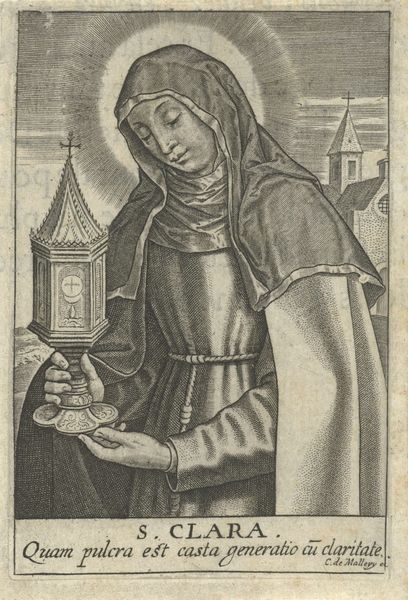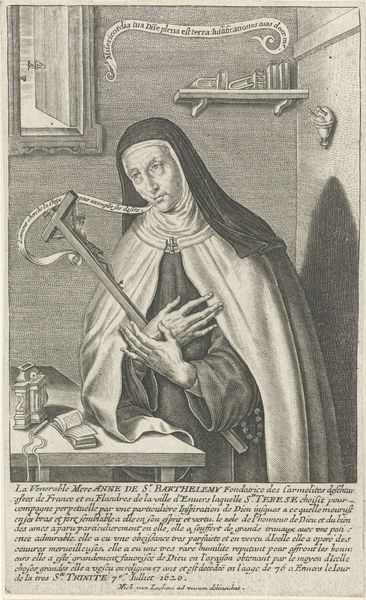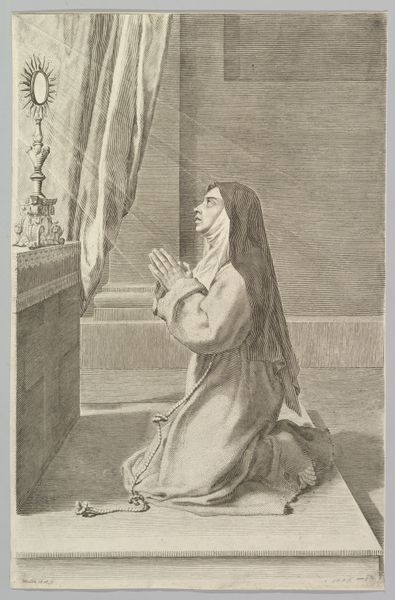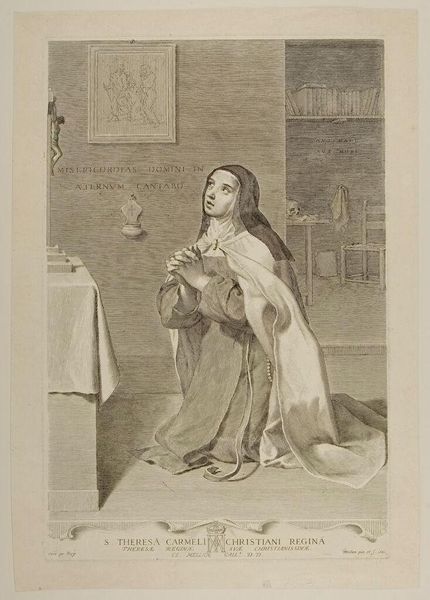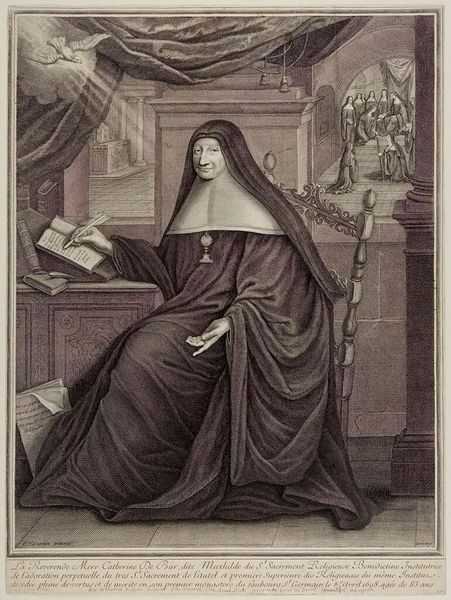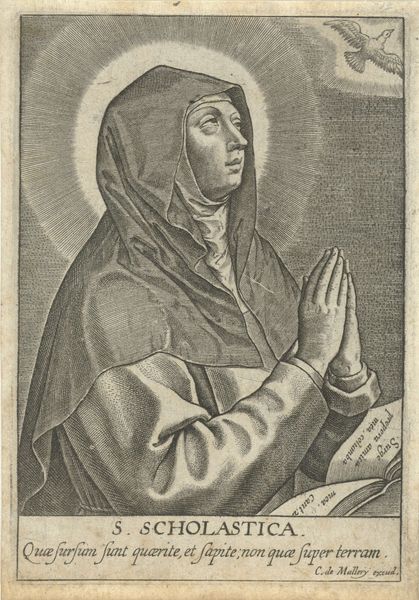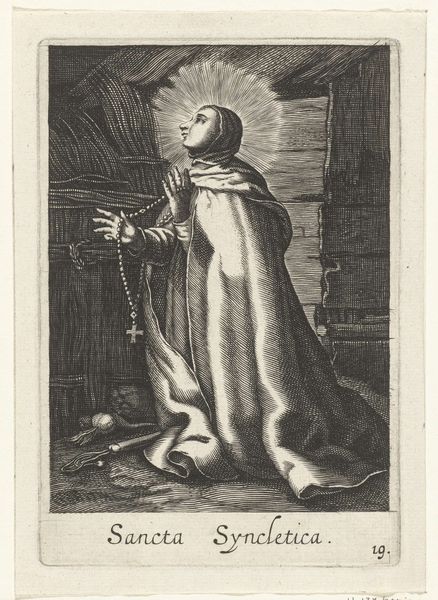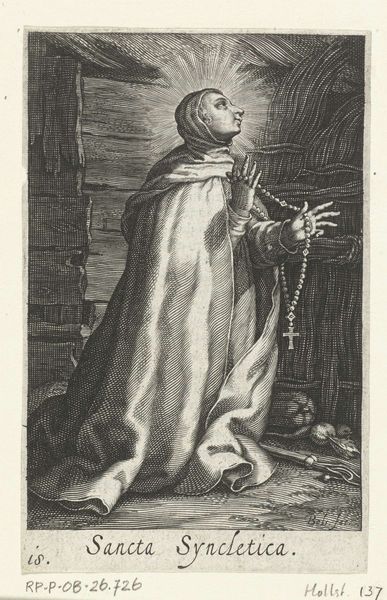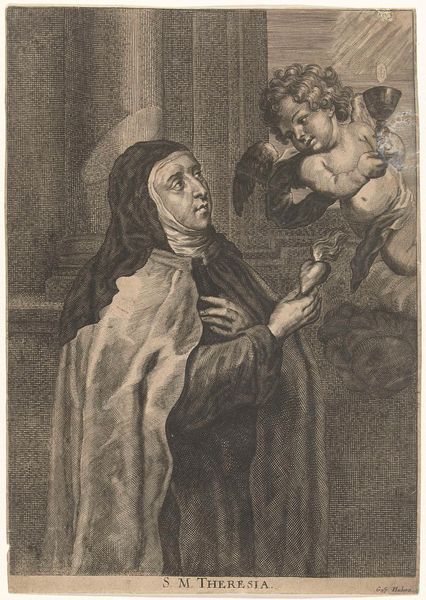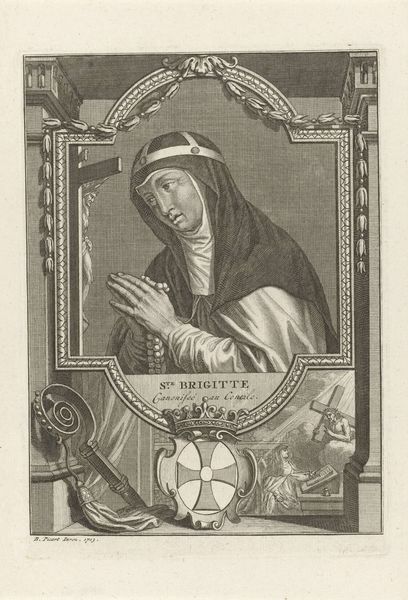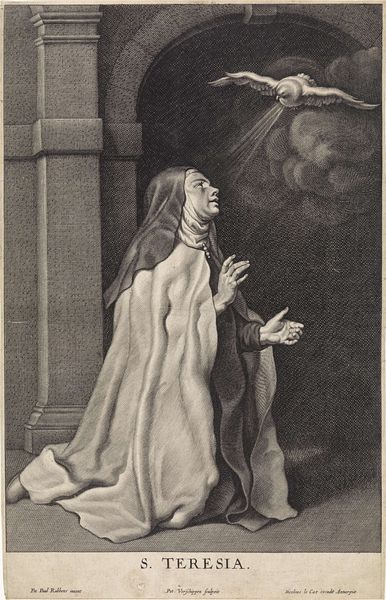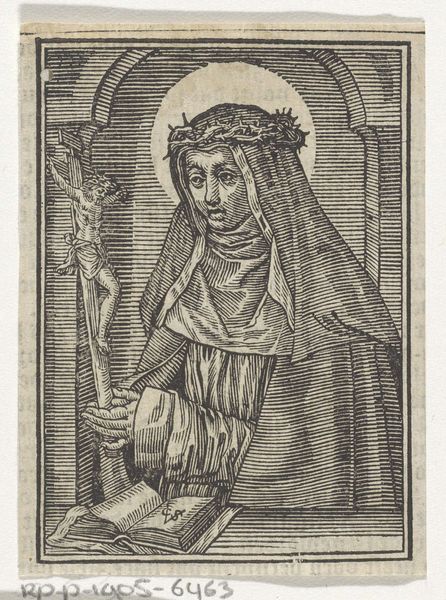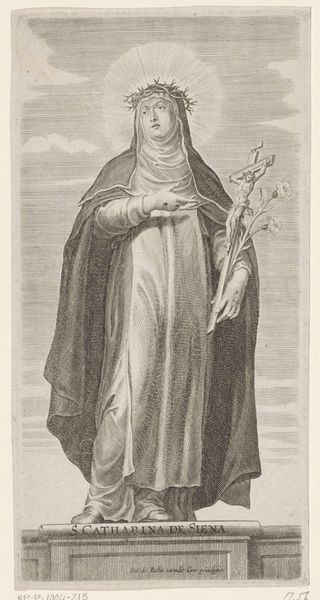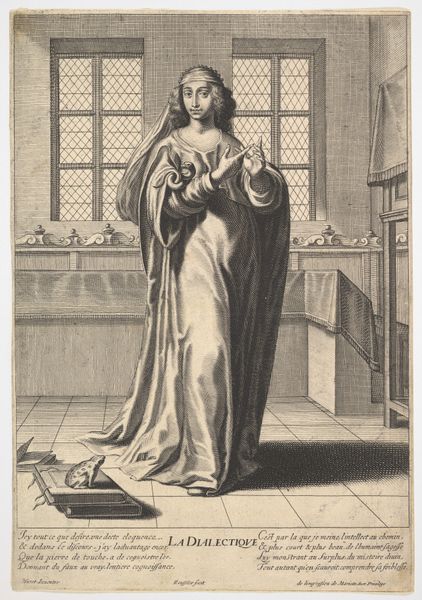
print, engraving
#
portrait
#
baroque
# print
#
old engraving style
#
history-painting
#
engraving
Dimensions: height 155 mm, width 100 mm
Copyright: Rijks Museum: Open Domain
Curator: This engraving presents us with Anna van Jezus, created sometime between 1611 and 1647 by Michel van Lochom. It’s a history painting, rendered in the Baroque style. What catches your eye first about the composition? Editor: It’s striking how the light functions. That stark beam emanating from the lantern, directing the viewer's gaze...it’s theatrical! It divides the picture space. The textures created through engraving alone are quite impressive too, such density! Curator: Indeed. Consider the socio-political context. This image, distributed as a print, serves as propaganda. It highlights the virtues of Anna van Jezus to inspire religious devotion and bolster the Counter-Reformation's aims. The Baroque style, with its dynamism and drama, was deliberately employed. Editor: Absolutely. That dramatic lighting underlines the subject’s piety. Visually, I see that the artist has contrasted her stillness against the more ornate interior scene: a way of reinforcing that piety? It almost looks like she is in conversation with some divine presence through her hand on that symbolic flaming heart. Curator: Precisely. The burning heart represents divine love. And that beam of light carries with it an inscribed banner of theological significance, which is there to assert specific doctrines related to divine will, speaking from a celestial light in what feels almost like divine mandate. The text framing her portrait celebrates her virtues, prudence, prophetic gifts, and the miracles attributed to her. Editor: It’s interesting to see how formal elements reinforce this message. Her hands almost touch in the very center, drawing our attention towards not only the heart, but toward her central virtue; further emphasizing devotion and almost physically conveying what feels very personal and vulnerable, an attempt to externalize devotion and emotion into the artwork itself. Curator: Such engravings like "Anna van Jezus," served a crucial function in disseminating religious imagery and promoting specific beliefs within a broader European society undergoing immense religious and political upheaval. Editor: I appreciate the effective use of visual symbolism alongside meticulous texture and framing to convey religious conviction, while, it sounds like the actual prints served a far larger purpose to society. Curator: Indeed, there's a potent convergence of artistic execution and socio-political strategy at play. Editor: A worthwhile exercise when examining artwork like these lies in asking questions like “how did visual vocabulary operate in order to serve something so intangible?” Thank you!
Comments
No comments
Be the first to comment and join the conversation on the ultimate creative platform.
